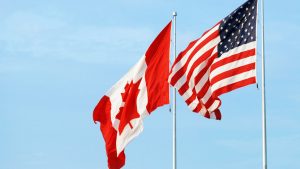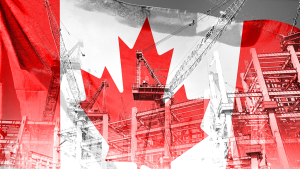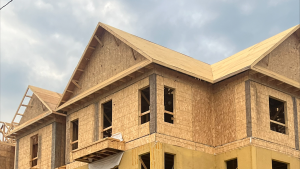Following one of the coldest Februarys on record, there are clear signs that both the thermometer and a number of key economic indicators of economic activity in Quebec are starting to move higher.
Probably the most significant indicator of the province’s strengthening economic health is the fact that over the past six months the value of its exports has increased by 18.9% year over year.
This is more than three times faster than the 5.0% gain recorded during the comparable period a year earlier. The largest (70%) contributor to this stronger pattern of exports was the U.S., led by gains in foreign sales of aluminum (+54.6% year over year), aircraft (+36%) and helicopters (+83.8% year over year).
Fuelled in part by the stronger pattern of external demand, the province has added 34,000 jobs over the past six months, well ahead of the 2,200 it added during the comparable period 12 months prior. Also, the majority (22,400) of these jobs were full time.
Turning to the key elements of domestic demand, consistent with the stronger pattern of job creation over the past several months, consumer spending — reflected by retail sales adjusted to exclude the drop in gasoline prices — rose by 3.5% year over year in the second half of 2014 compared to a gain of 2.5% year over year during the same period a year earlier.
The relative economic health of the province is also reflected by the most recent Conference Board of Canada’s Survey of Consumer Confidence. According to the Conference Board, the index for Quebec has increased by 19.9% year to date while the index of the country as a whole dropped by 8.4%.
Although home sales stalled in February, possibly due to the above noted cold weather, over the past six months home sales in the province are up by 2.5%. This increase compares to a 2.2% decline for the country as a whole over the same period.
Despite the relative strength of housing demand in Quebec over the past several months and the prospect that it will continue to improve into 2016, the pace of new construction will probably be depressed over the near term by the significant inventory of completed and unoccupied dwellings particularly in Montreal. Total housing starts are projected to total 37,000 units in 2015 and 38,000 in 2016 compared to 38,800 in 2014.
In the near term, a slight uptick in the most recent CFIB Business Barometer points to a steady expansion of economic activity.
The outlook for hiring also improved, albeit partly due to seasonal factors. Looking further ahead, from our perspective, the outlook for the Quebec economy is probably brighter now than it has been for the past ten years.
This observation is based in large part on the steady improvement in the health of the U.S. economy, the province’s major trading partner. In addition, the strong desire by a clear majority of the province’s electorate to remain part of Canada and the fiscal discipline indicated by the new government points to a significant improvement in the province’s investment climate.
Barring a major external economic and/or financial shock, we expect growth in Quebec to average in the range of 1.8% to 2.2% over the next two years following an estimated gain of 1.5% in 2014.











Recent Comments
comments for this post are closed